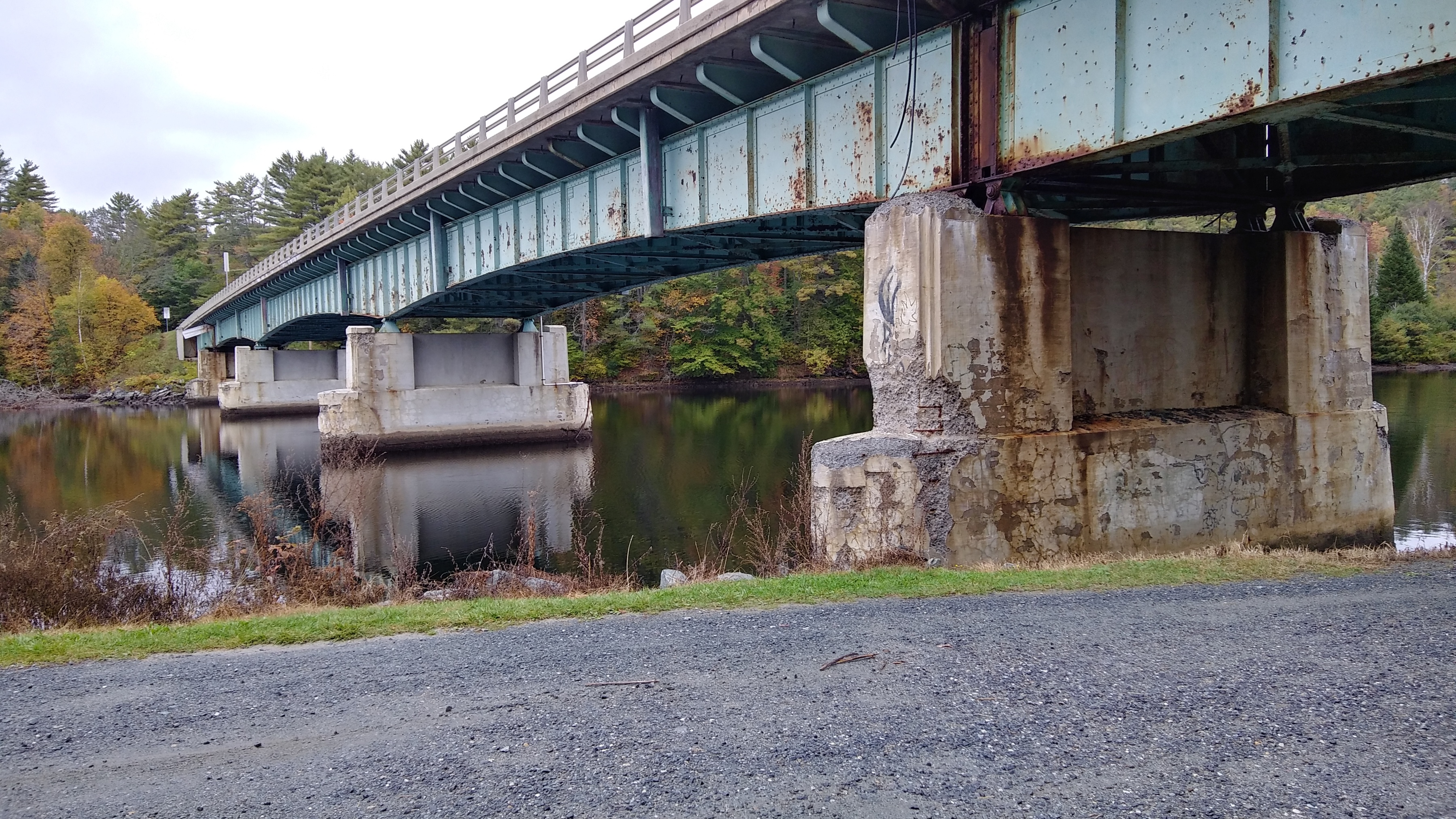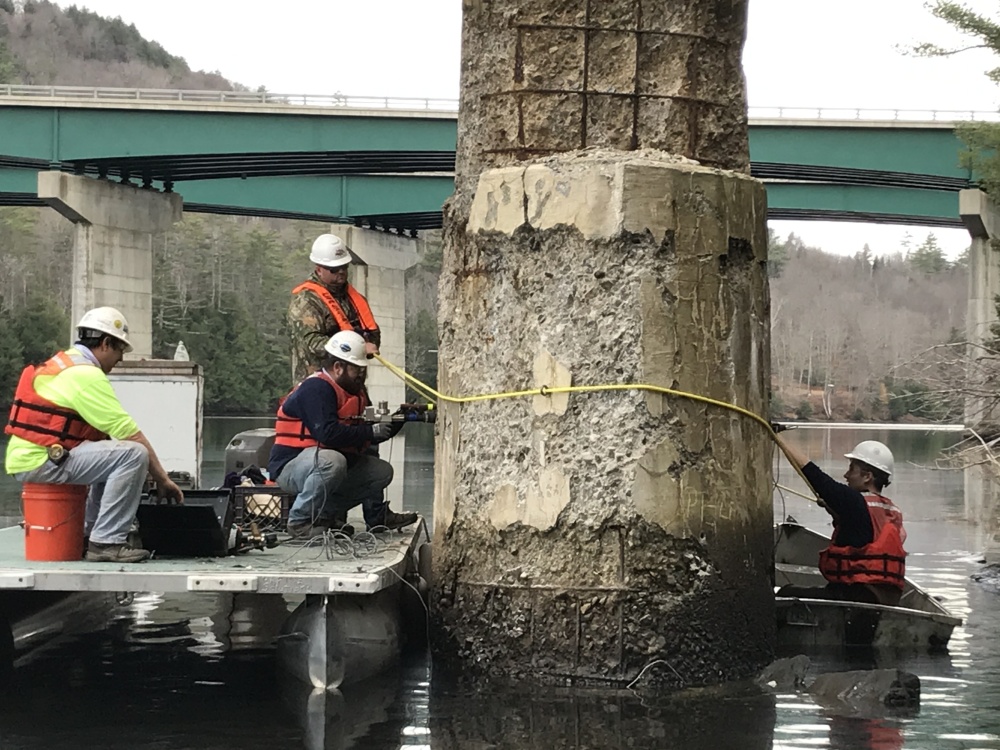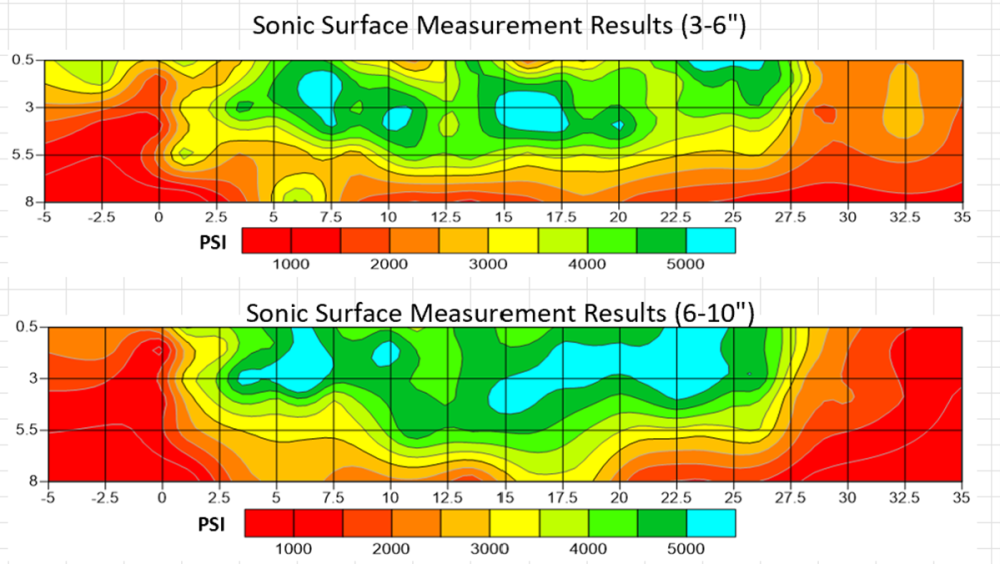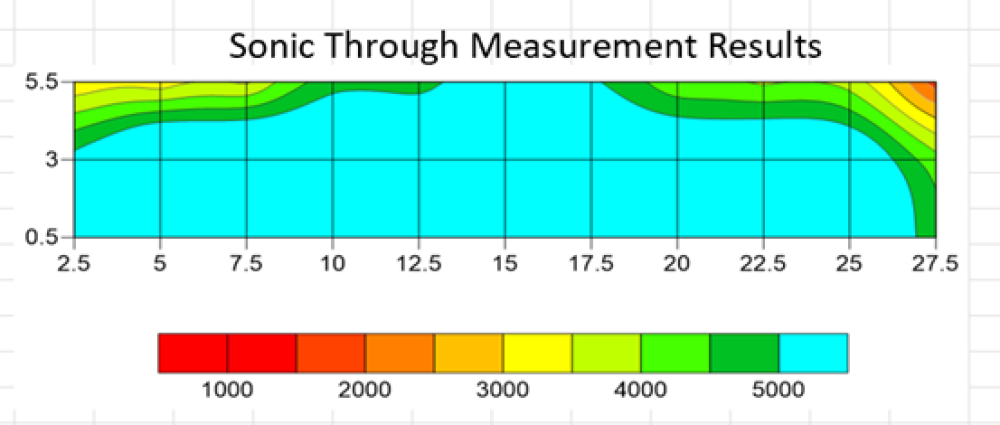Non-destructive Testing on a Concrete Bridge Substructure | New Hampshire


Services Applied by VCS Engineering
Project Introduction
A five-span bridge was undergoing evaluation by an engineering consultant. The superstructure was being replaced, but the possibility of preserving the concrete substructure was unknown—the internal condition of four concrete bridge piers and two abutments needed to be quantified. The challenge is whether shallow surface repairs can extend the substructure’s service life or if removal and replacement of the substructure is required.
NDT Division was contracted to perform various non-destructive test methods to determine the condition and durability of the substructure to assist the engineering team with their evaluation of the bridge.
Project Scope
NDT Division used non-destructive impact echo/pulse velocity (IE/PV) at the concrete surface and through testing to determine concrete strength by measuring the velocity of compressional and shear waves propagating through the concrete. Ground penetrating radar (GPR) and corrosion potential measurements were also collected to determine the cover depth and risk for corrosion of the steel reinforcement in the piers. These measurements helped quantify the concrete deterioration's depth, severity, and extent.

Project Results
The multiple non-destructive testing approaches conducted by NDT Division provided the engineering team with details of the extent of deterioration of the concrete, including risk for corrosion, delaminations, and the in-situ compressive strength. Surface and through testing measurements confirmed that the substructure's internal concrete condition was adequate to preserve the piers, requiring only external superficial repairs. The assessment enabled reuse of the existing pier foundations, resulting in substantial cost savings and a construction schedule reduction of several months

